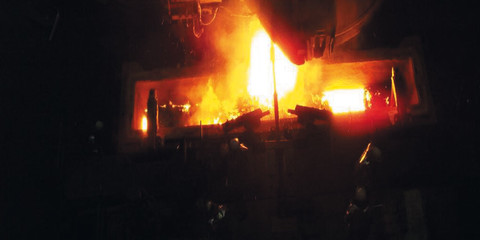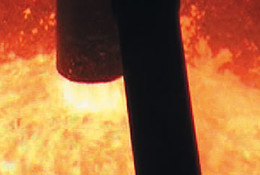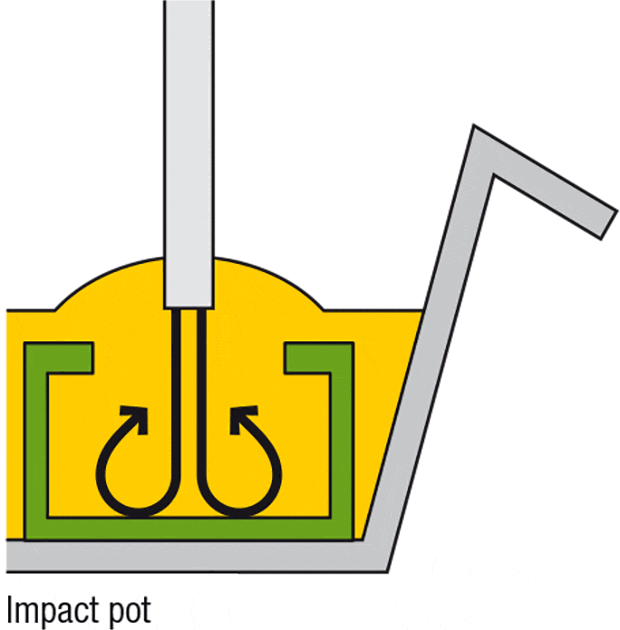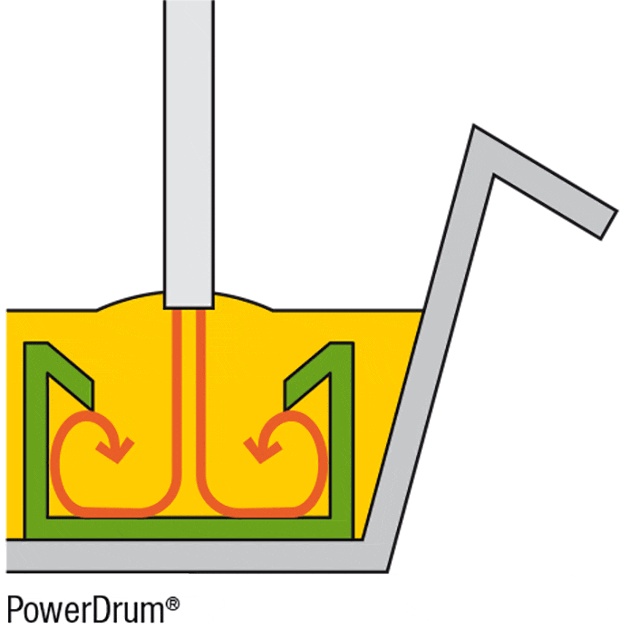Flow control
The tundish has two essential purposes: to ensure a continuous casting process during the change of the steel ladle; and to maintain - or even improve - the steel quality using as high as possible separation rate of non-metallic inclusions contained in the cast. For this reason there must be optimum flow structures in the tundish during the casting process.
The WEERULIN PowerDrum® ensures perfect flow conditions in the tundish:
- The blast is retarded and buffered by the cushion effect. The number of areas with high flow speeds and/or extensive whirl turbulence in the tundish are reduced. The flow through the tundish is homogenized.
- The repelled upward blast splits on the surface and transports the slag radially away from the blast, reducing the amount of slag segregates. The upward flow shortens the segragates' way to separation in the slag.
- The piston flow volume of the flow is increased and the temperature distributed more homogeneously within the cast.
An area of extensive mixing develops in the first third of the tundish. Thus temperature changes or application of a new type of steel are quickly compensated. The remaining part of the tundish shows an even flow with rather low speeds. The piston flow rate is increased considerably by the PowerDrum, which improves the separation conditions for non-metallic inclusions.
In the beginning of the stationary casting phase often cover powders are used in the tundish. Their task is to protect the cast from oxygen in the air, preventing reoxidation. By the calming the surface with reduced flow speeds and low turbulence rates, the WEERULIN PowerDrum ensures that the slag layer does not tear open.



